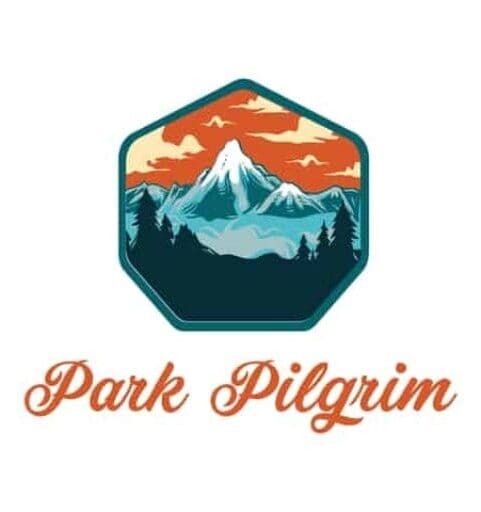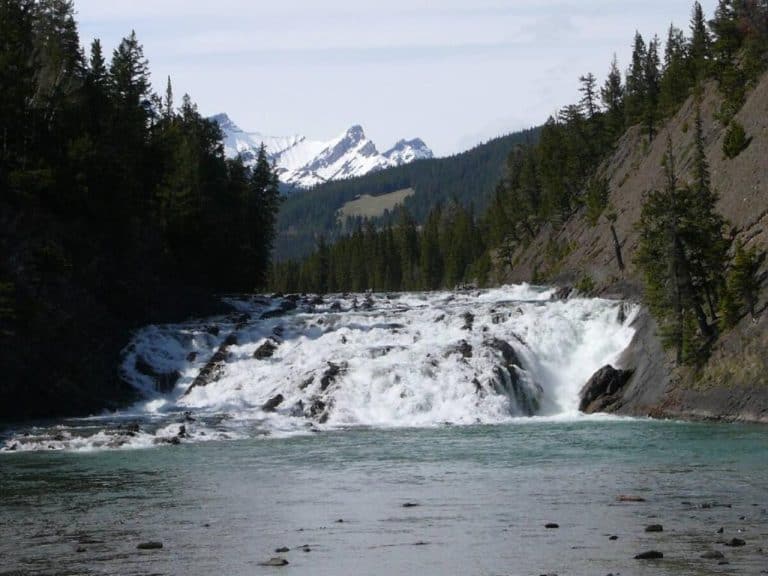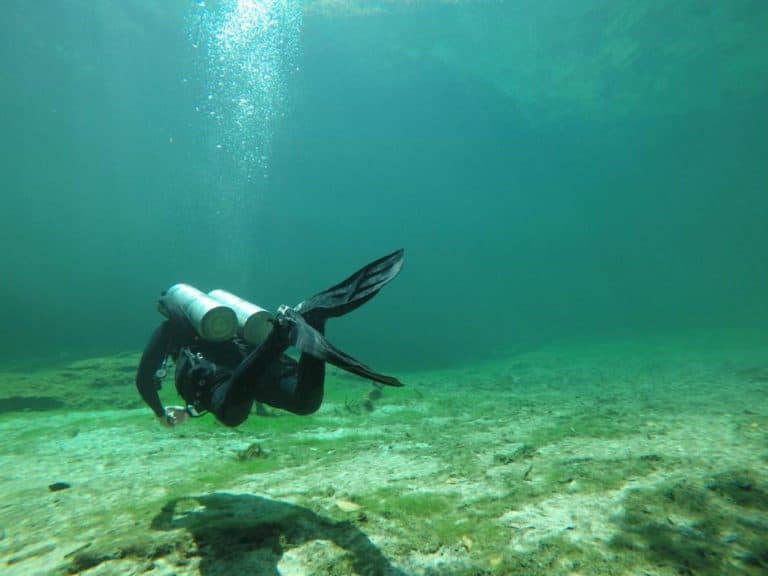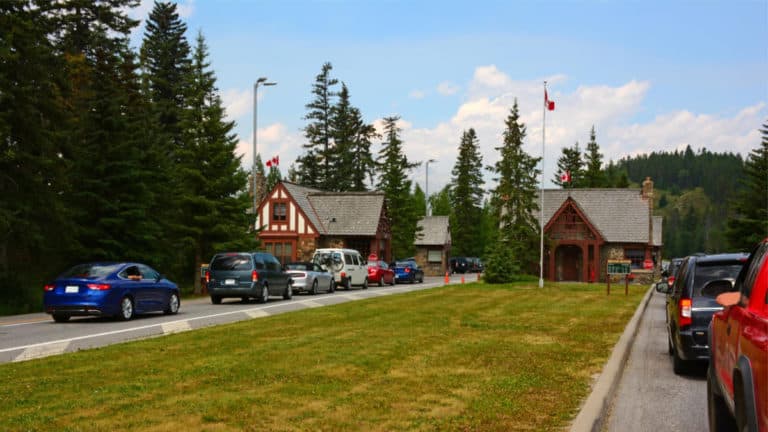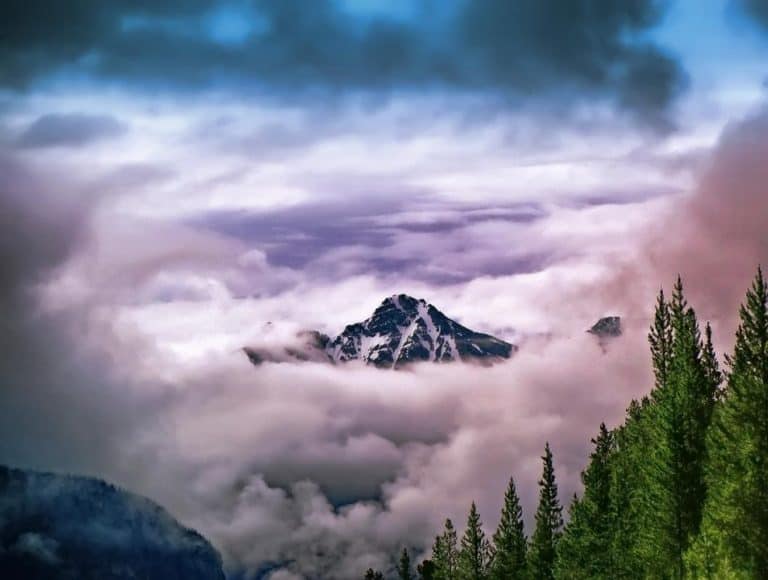Banff to Lake Louise by Bike: Scenic Adventure Awaits
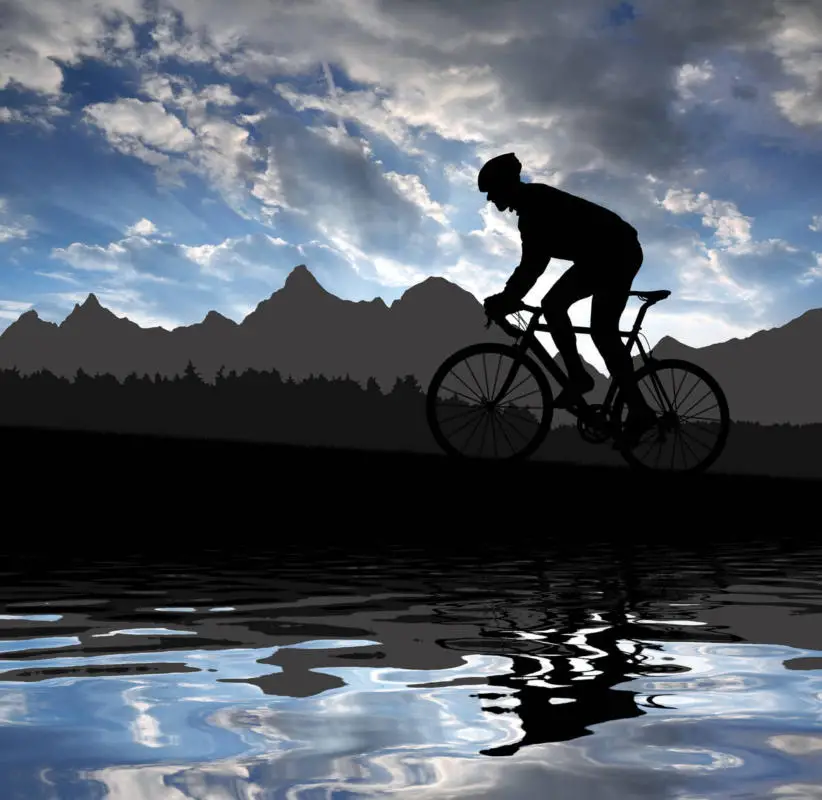
Biking from Banff to Lake Louise is a must-do for any cyclist. The route along the Bow Valley Parkway (Highway 1A) offers some of the most beautiful scenery in the world. In this guide, I provide you with everything you need to know to make the most of your cycling adventure.
While Banff National Park seems shaped for car exploration, there are several breathtaking cycling routes. One of the most beautiful and gratifying rides is the road from Banff to Lake Louise or vice versa. It’s about 59 kilometers long, a feasible distance for many cyclists.
There isn’t a marked bicycle lane, but the road is wide enough to be okay when using reasonable caution. Let’s have a look.
Know the Route
The Banff to Lake Louise bike trail crosses the Bow Valley Parkway (Highway 1A) and is a popular 59-kilometer (37 mi) route for cyclists. It offers a mix of undulating terrain and stunning scenery, is easy to follow and generally is not too busy.
The route contains a few hills along the way in both directions. Since Lake Louise is at a higher elevation than Banff, you will gain 412 altimeters (1,352 ft). In addition, you’re likely to face headwinds when riding from Banff to Lake Louise and tailwinds when riding in the opposite direction.
Cycling from Banff to Lake Louise – Facts & Figures
| Road | Bow Valley Parkway (Highway 1A) |
| Road surface | Asphalt |
| Distance | 59 kilometers (37 mi) |
| Elevation gain | 412 meters (1351 ft) |
| Highlights along the way | 11 |
Cycling the Trans-Canada Highway (Highway 1)
Since cyclists can use the shoulders of Alberta’s highways, you could ride the Trans-Canada Highway between Banff and Lake Louise.
However, I do not suggest taking this route. First of all, for cyclists, it’s way too busy with cars, RVs and trucks traveling at a speed of 110 kilometers (70 mi) per hour. Secondly, the course is not nearly as beautiful as the Bow Valley Parkway.
What’s the Road Like?
The Bow Valley Parkway runs parallel to the Trans-Canada Highway, connecting the towns of Banff and Lake Louise. The road is paved with asphalt. The pavement quality varies. Some sections of the road are well-maintained with smooth, newly paved asphalt, while others may be older and have cracks or potholes.
The road doesn’t have shoulders, and it’s not uncommon to encounter gravel or debris on the side of the road, so be wary of that.
Furthermore, the road is generally winding and hilly, with some steep grades but nothing too tricky. Be aware of traffic, as it’s also used by cars, RVs, and buses. Although the good news here is that the road is generally not too busy.
Please note that if you’re coming from Banff, you’ll need to cycle the Trans-Canada Highway for about 5.5 kilometers (3.4 mi) before turning onto the Bow Valley Parkway, so be careful.
Arriving at Lake Louise is no hassle as the Bow Valley Parkway leads straight into the village, crossing the Trans-Canada Highway (see the map below).
When to Ride the Bow Valley Parkway
The best time to ride the Bow Valley Parkway is May until October. In the other months, there will be too much snow on the road to cycle safely and comfortably.
In addition, Parks Canada started a three-year pilot in 2022, closing the road for vehicles from May 1 to June 25 and September 1 to 30. If you ask me, the latter closure is the better of the two because the weather is nicer, and the road becomes even more spectacular as fall colors begin to show.
Highlights Along the Way
One of the best things about the Banff to Lake Louise bike trail is its stunning scenery. As the Bow Valley Parkway is one of the country’s most scenic roads, there’s no shortage of breathtaking views and highlights.
Three kilometers into the Bow Valley Parkway, your first highlight is Backswamp. This inconspicuous and unmarked viewpoint offers outstanding views of the Bow River and Mount Bourgeau. There are train tracks just below you.
You’ll find Backswamp to your left, right before the first stretch of the one-way road.
Next up is the Hillsdale Meadow Viewpoint. At this roadside pullout, you have a sweeping view of the surrounding Rockies. It includes a gorgeous wildflower-filled meadow.
The third highlight is the most significant of the route: Johnston Canyon. It’s one of the most visited tourist attractions in the park. The Johnston Canyon trail begins at the Bow Valley Parkway and offers a chance to see the Johnston Canyon waterfalls and the Ink Pots. The trail is partially paved and well-maintained.
Not far beyond Johnston Canyon, you’ll find Moose Meadows on your right. A road leads up to a small paved car park and the Moose Meadows trailhead. Tourists often overlook this stop, but the Moose Meadows trail is well worth it.
It leads straight to Johnston Canyon’s Upper Falls. If you want to hike this trail, plan it well. It’s 8.2 kilometers (5.1 mi) out and back and includes 359 meters (1,178 ft) elevation gain. It takes approximately 3 hours to complete.
Five kilometers (3 mi) further down the Bow Valley Parkway, at Castle Junction, you’ll find the Rockbound Lake trail. It takes you to – you guessed it – Rockbound Lake.

To get to the lake, you’ll hike to the backside of Castle Mountain. At 18 km (11 mi) out and back, it’s a long and challenging hike with an elevation gain of 1,017 meters (3,337 ft). It takes roughly 7 hours to complete. Therefore, I highly recommend you book a nearby overnight stay if you want to include this in your trip.
The Castle Mountain Campground is the closest place to stay the night. If you choose not to camp, you can get a room at the HI Castle Mountain Wilderness Hostel or the Castle Mountain Chalets. Make reservations well in advance to ensure a room.
If you don’t like hiking far, you can hike to Silverton Falls, just off the Rockbound Lake Trail. This two-tiered waterfall is only 700 meters (766 yards) from the Rockbound Lake Trail parking lot.
Castle Mountain itself, which you can see in all its glory at Castle Junction, is yet another highlight. This impressive mountain makes for some stunning Instagram material, so be sure to stop and take a few snapshots of this intimidating Rocky Mountain, which indeed resembles the shape of a castle.
In case you missed the junction (okay, you can’t really), you’ll find the Castle Cliffs Lookout on your right, which also offers stunning views of the mountain.
Next up is the Storm Mountain Lookout. This viewpoint provides a view of Storm Mountain and the surrounding mountains. You can sit at a picnic table or walk down to the train track and wait until a train passes for a stunning snapshot. In terms of beauty, it rivals the much better-known Morant’s Curve (see below).
After the Storm Mountain Lookout, you’ll soon pass the Internment Camp Memorial. This modest memorial commemorates the prisoners of World War I. It provides a good insight into the sad history of this location at the Bow Valley Parkway.
It housed 660 enemy aliens from Ukraine, Hungary, Germany, and Austria, making it the largest internment site in the Rockies. The prisoners contributed to developing the infrastructure in Banff National Park in often harsh conditions.

The last notable location before you enter Lake Louise is the famous Morant’s Curve, one of the most picture-perfect locations in the park. It has been the backdrop of numerous Canadian Pacific Railway advertisements, paintings, and drawings. If you have enough time, wait for a train to pass through the corner and take a beautiful snapshot of this famous scene.
Safety While Cycling in Bear Country
The Banff to Lake Louise bike trail is located in bear country, so be aware of the safety precautions while cycling.
This includes carrying bear spray, especially if you plan to do some hikes. Researching and familiarizing yourself with bear safety before setting out is a good idea.
Additionally, be mindful of other potential hazards, such as sudden weather changes (rain or snow), and have a plan in case of an emergency.
Wanna know where to buy and how to use bear spray? Click the link to find out!
What Gear to Pack?
When cycling in the mountains, it’s essential to come prepared with the right gear. This includes a good quality bike, a helmet, appropriate clothing for the weather, and enough water and snacks to keep you going.
It’s also a good idea to bring a repair kit with you in case of mechanical issues and a first aid kit in case of any accidents or injuries. Ask your rental place about these items if you need to rent a bike.
Additionally, you may consider bringing additional gear, such as a map or a GPS device and the aforementioned bear spray in case of wildlife encounters.
Fueling Your Ride: What to Eat and Drink?
Proper nutrition and hydration are essential for any cyclist, especially when tackling a challenging route like the Banff to Lake Louise bike trail.
One of the most important things to consider is to ensure you are consuming enough carbohydrates to provide energy for your muscles and prevent fatigue. Good sources of carbohydrates include whole grains, fruits and vegetables, and energy bars or gels.
It’s important to stay hydrated during your trip, especially on hot summer days. So always make sure you drink enough water. It helps to avoid dehydration. You may want to bring a water bottle or hydration pack and refill it regularly throughout the ride.
You’d also want to drink a sports drink with electrolytes to help replenish any loss during sweating. And of course it’s a good idea to consume food and drink regularly throughout the ride to keep your energy levels steady.
One more tip: try to avoid heavy or greasy foods before cycling. They can cause stomach discomfort while riding.
Where to Stay – Accommodation Along the Route
The Bow Valley Parkway between Banff and Lake Louise offers a variety of accommodation options for cyclists. A popular option is camping, with five (!) campgrounds close to or along the route. These are (as they appear from Banff):
- Tunnel Mountain Village Campground
- Johnston Canyon Campground
- Castle Mountain Campground
- Protection Mountain Campground
- Lake Louise Campground
These campgrounds offer fire pits, picnic tables, and washrooms, making them an excellent option for immersing yourself in the wilderness during an overnight stay.
If you want to know more about these campgrounds, I recommend reading the Ultimate Overview of Campgrounds in Banff.
Another option is to stay in a hostel or cabin, such as HI Banff Alpine Centre or the HI Castle Wilderness Hostel. These accommodations offer basic amenities and are budget-friendly options if you want a more comfortable stay.
If you’re looking for something more luxurious, there are several hotels and resorts near the trail. Here’s a list (as they appear from Banff):
- Juniper Hotel
- Johnston Canyon Lodge & Bungalows
- Castle Mountain Chalets
- Baker Creek Mountain Resort by Basecamp
- Lake Louise Inn
If you desire to go even more upscale, the Fairmont hotels Château Lake Louise and Banff Springs come to mind. They offer luxurious rooms and amenities such as a spa, restaurant, and bar.
Whatever accommodation you may book, make sure you book ahead, especially during peak season, as accommodations fill up quickly. It’s also a good idea to consider the location of the accommodation, especially when you want to do a lot of hiking. If you return to your bike tired, you don’t want to cycle far to your campground, hostel or hotel.
It’s also a good idea to check for any additional services or amenities that may be useful for cyclists, such as bike storage or repair services.
Rent a Bike
You probably didn’t take your bike to Banff National Park, but not to worry. There are plenty of bike rental places in the town of Banff and Lake Louise. Below you’ll find an overview of bike rentals.
BANFF
| RENTAL SHOP | ADDRESS | PHONE | WEBSITE | |
|---|---|---|---|---|
| Banff Adventures | 211 Bear Street | +1 403 – 762 4554 | banffadventures.com | info@banffadventures.com |
| Banff Cycle | 327 Railway Avenue | +1 403 – 985 4848 | banffcycle.com | info@banffcycle.com |
| Banff Soul Ski and Bike * | 203a Bear Street | +1 403-760-1650 | soulskiandbike.com | info@soulskiandbike.com |
| Black Diamond Bike & SUP Rentals | 201 Lynx Street | +1 825 – 398 9563 | blackdiamondbanff.com | rentals@blackdiamondbanff.com |
| Chateau Mountain Sports | 405 Spray Avenue | +1 403 – 762 2508 | chateaumountainsports.com | through form on website |
| Snowtips-Bactrax | 225 Bear Street | +1 403 – 762 8177 | snowtips-bactrax.com | snowtips@telusplanet.net |
| SkiBig3 Adventure Hub | 114 Banff Avenue | +1 403 – 762 4754 | skibig3adventurehub.com | info@skibig3.com |
| Ultimate Sports | 206 Banff Avenue | +1 403 – 762 0547 | ultimatebanff.com | retail@ultimatebanff.com |
LAKE LOUISE
| RENTAL SHOP | ADDRESS | PHONE | WEBSITE | |
|---|---|---|---|---|
| Chateau Mountain Sports | 111 Lake Louise Drive Lake Louise | +1 403 – 522 3837 | chateaumountainsports.com | through form on website |
| Wilson Mountain Sports | Building A Samson Mall, 101 Lake Louise Drive | +1 403 – 522 3636 | wmsll.com | info@wmsll.com |
If you want to know more about cycling in Banff National Park in general, please read the post The Best of Banff and Lake Louise by Bike: A Cyclist’s Guide.
Distance Table
Below you’ll find distances to all important attractions and accommodations along or near the route, from Banff and Lake Louise.
| NAME | KIND OF STOP | BANFF | LAKE LOUISE |
|---|---|---|---|
| Tunnel Mountain Village Campground | Campground | 2 km (1.24 mi) | 61 km (38 mi) |
| HI Banff Alpine Centre | Hostel | 2 km (1.24 mi) | 61 km (38 mi) |
| Juniper Hotel | Hotel | 2 km (1.24 mi) | 58 km (36 mi) |
| Castle Cliff Viewpoint | Highlight | 10 km (6 mi) | 50 km (31 mi) |
| Hillsdale Meadow | Highlight | 19 km (12 mi) | 40 km (25 mi) |
| Johnston Canyon | Highlight | 24 km (15 mi) | 35 km (22 mi) |
| Johnston Canyon Campground | Campground | 24 km (15 mi) | 35 km (22 mi) |
| Johnston Canyon Lodge & Bungalows | Hotel | 25 km (15.5 mi) | 34 km (21.5 mi) |
| Moose Meadows | Highlight | 26 km (16 mi) | 33 km (21 mi) |
| Castle Mountain Campground | Campground | 32 km (20 mi) | 28 km (17 mi) |
| Silverton Falls | Highlight | 32 km (20 mi) | 28 km (17 mi) |
| Rockbound Lake | Highlight | 32 km (20 mi) | 28 km (17 mi) |
| Castle Junction | Highlight | 32 km (20 mi) | 28 km (17 mi) |
| HI Castle Wilderness Hostel | Hostel | 32 km (20 mi) | 28 km (17 mi) |
| Castle Mountain Chalets | Hotel | 32 km (20 mi) | 28 km (17 mi) |
| Castle Cliffs Viewpoint | Highlight | 33 km (21 mi) | 27 km (16.5 mi) |
| Storm Mountain Lookout | Highlight | 38 km (24 mi) | 22 km (14 mi) |
| Internment Memorial | Highlight | 43 km (27 mi) | 20 km (12 mi) |
| Protection Mountain Campground | Campground | 50 km (31 mi) | 17 km (11 mi) |
| Morant’s Curve | Highlight | 60 km (37 mi) | 6.5 km (4 mi) |
| Lake Louise Inn | Hotel | 66 km (41 mi) | 1 km (0.62 mi) |
| Lake Louise Campground | Campground | 66 km (41 mi) | 1 km (0.62 mi) |
This post contains affiliate links and any sale made through such links will reward this site a small commission – at no extra cost to you.
